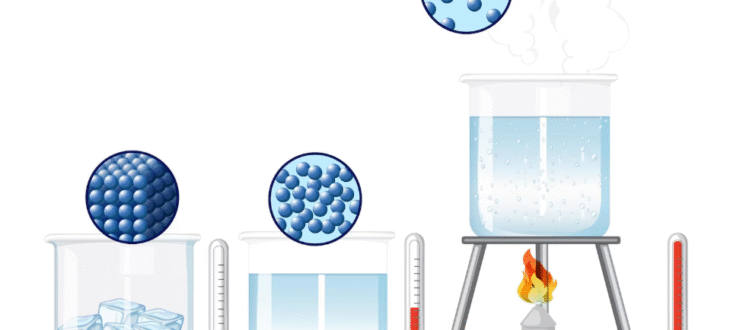Matter in Our Surroundings MCQ
The chapter “Matter in Our Surroundings MCQ” for Class 9 explains what matter is and how it exists in different states like solid, liquid, and gas. It helps students understand properties, changes of state, and everyday examples. This makes science relatable by connecting concepts to things we see all around us.
Q 1 – This is the incorrect statement:
(a) Matter is continuous in nature.
(b) Of the three states of matter, the one that is most compact is the solid state.
(c) In solid-state inter-particles space (i.e., empty space) is minimum.
(d) The density of a solid is generally more than that of a liquid.
Q 2 – Select the one that when used would be considered as best condition for liquification of a gas:
a)Increasing the temperature
b)Decreasing the pressure
c)Increasing the pressure and decreasing the temperature
d)Decreasing the pressure and increasing the temperature.
Q 3 – Select the correct order of evaporation for water, alcohol, petrol, and kerosene oil:
(a)Water > alcohol > kerosene oil > petrol
(b)Alcohol > petrol > water > kerosene oil
(c) Petrol > alcohol > water > kerosene oil
(d) Petrol > alcohol > kerosene oil > water
Q 4 – Which one is a sublime substance?
(a)Table salt
(b)Sugar
(c)Iodine
(d)Potassium iodide
Q 5 – S. I. unit of temperature is:
(a)Celsius
(b)Fahrenheit
(c)Kelvin
(d)None of these
Q 6 – 100 K is equal to:
(a)183°C
(b)-173°C
(c)173°C
(d)-273°C
Q 7 – The process of change of liquid state into gaseous state at constant temperature is known as:
(a)Boiling
(b)Melting
(c)Fusion
(d)Evaporation
Q 8 – What is Dry Ice?
(a)Ice having no water of crystallization
(b)Ice that has been dried
(c)Solid carbon dioxide
(d)None of these
Q 9 – Rate of diffusion depends upon:
(a)Temperature
(b)Surface area
(c)Both temperature and surface area
(d)None of these
Q 10 – Which of the following processes is known as fusion?
(a) Change of liquid to solid
(b) Change of solid to liquid
(c) Change of liquid to vapor
(d) Change of gaseous state to solid state
Q 11 – The one, in which inter-particle forces are strongest, is:
(a)Sodium chloride
(b)Hydrogen
(c)Ether
(d)Carbon dioxide
Q 12 – Zig-zag movement of the solute particle in a solution is known as
(a) Linear motion
(b) Circular motion
(c) Brownian motion
(d) Curved motion.
Q 13 – Gases can be liquefied by
(a) increasing pressure
(b) decreasing temperature
(c) both (a) and (b)
(d) decreasing pressure
Q 14 – Which is more effective in cooling?
(a) Ice at 273K
(b) Water at 273 K
(c) Water at 373K
(d) Ice at 373K
Q 15 – 0 ° C temperature is equal to
(a) 0 K
(b) 273 K
(c) -273 K
(d) 300 K
Q 16 – The process involving the change of state from solid to gas is called
(a) melting
(b) boiling
(c) fusion
(d) sublimation

